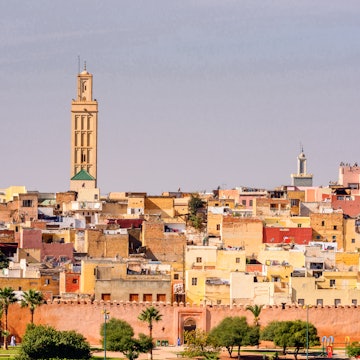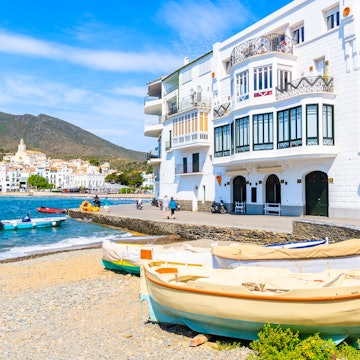

Colorful food stalls in the market in Meknes, Morocco. Juergen Ritterbach/Getty Images
There's a lot more to Moroccan cuisine than couscous and tajines. From cooked vegetable salads and slow-roasted meats to fresh fruits and flaky pastries, the traditional dishes of Morocco are mouth-watering.
Midrange restaurant menus can often repeat the same old classics, so to get more variety you need to feast on street food or dine at one of the growing number of creative fusion restaurants. Home-cooked food is also some of the best in the country, so eating at your riad (guesthouse) can be another good option. These are the best drinking and dining experiences to try during a visit to magnificent Morocco.
Start the day with Moroccan breakfast classics
Breakfast in Morocco is a simple yet filling meal that often includes some form of bread or pastry and eggs. Beghrir is Morocco’s version of pancakes, a fluffy morning treat made from semolina and often topped with honey butter and the classic shakshuka follows the North African tradition of cooking poached eggs in a spicy tomato, pepper and onion sauce. Or, keep it simple with the go-to morning meal of a fried egg in olive oil paired with olive and cheese nibbles.
Where to try it: Head to Café Des Épices in Marrakesh for delightful morning eats and rooftop views of the medina. In Casablanca, La Sqala is popular for its quality service, food and atmosphere.

Find time to try a tajine
The quintessential Moroccan dish is a stew cooked in a conical earthenware pot that keeps the ingredients exceptionally moist and tender. The most common tajines are chicken with preserved lemons and green olives, lamb or beef with prunes, and kefta (spiced meatballs of ground lamb and/or beef) interspersed with eggs in a zesty tomato sauce.
Ras el hanout is a seasoning staple in North African cuisine that blends 12 spices, including cinnamon, cumin, ginger, turmeric, black pepper, white pepper, coriander, cayenne, allspice, nutmeg, cloves and salt. The spice blend is a key ingredient in this dish and many of the region’s tajines and other stews – and an underrated souvenir worth picking up in the souqs.
Where to try it: Located in Fez, check out family home-turned-restaurant Dar Hatim features a special lamb tajine.
Bite into a brochette from a street stall
Moroccan brochettes (kebabs) are a firm favorite, rubbed with salt and spices, grilled on a skewer, and served with khobz (flatbread) and harissa (hot chili paste), cumin, and salt. Among the most popular varieties are lamb, chicken, kefta and the flavorful "mixed meat" (usually lamb or beef plus heart, kidney and liver). It’s also one of the most popular street food items, available at street stalls all over the city.
Where to try it: Djembe El Fna in Marrakesh has street food as far as the eye can see, from brochettes that will tempt anyone to sheep’s brains for the adventurous travelers.

Savor Morocco’s national dish, couscous
Morocco’s national dish – also known as seksu – is traditionally served on Fridays; although some restaurants now dish it up every day of the week. The age-old process is time-consuming – durum wheat is ground into fine granules and then rolled by hand. Salted water and flour are added, after which it can take up to five hours to steam to light and fluffy perfection.
Couscous is served with an array of vegetables – seksu bedawi, hailing from Casablanca, includes cabbage, carrots, courgettes, onions, potatoes, pumpkin and squash – or a mix of meat or chicken and vegetables, all accompanied by a flavorsome broth that soaks into the couscous.
Where to try it: Enjoy couscous and other traditional Moroccan staples at Al Mounia in Casablanca.
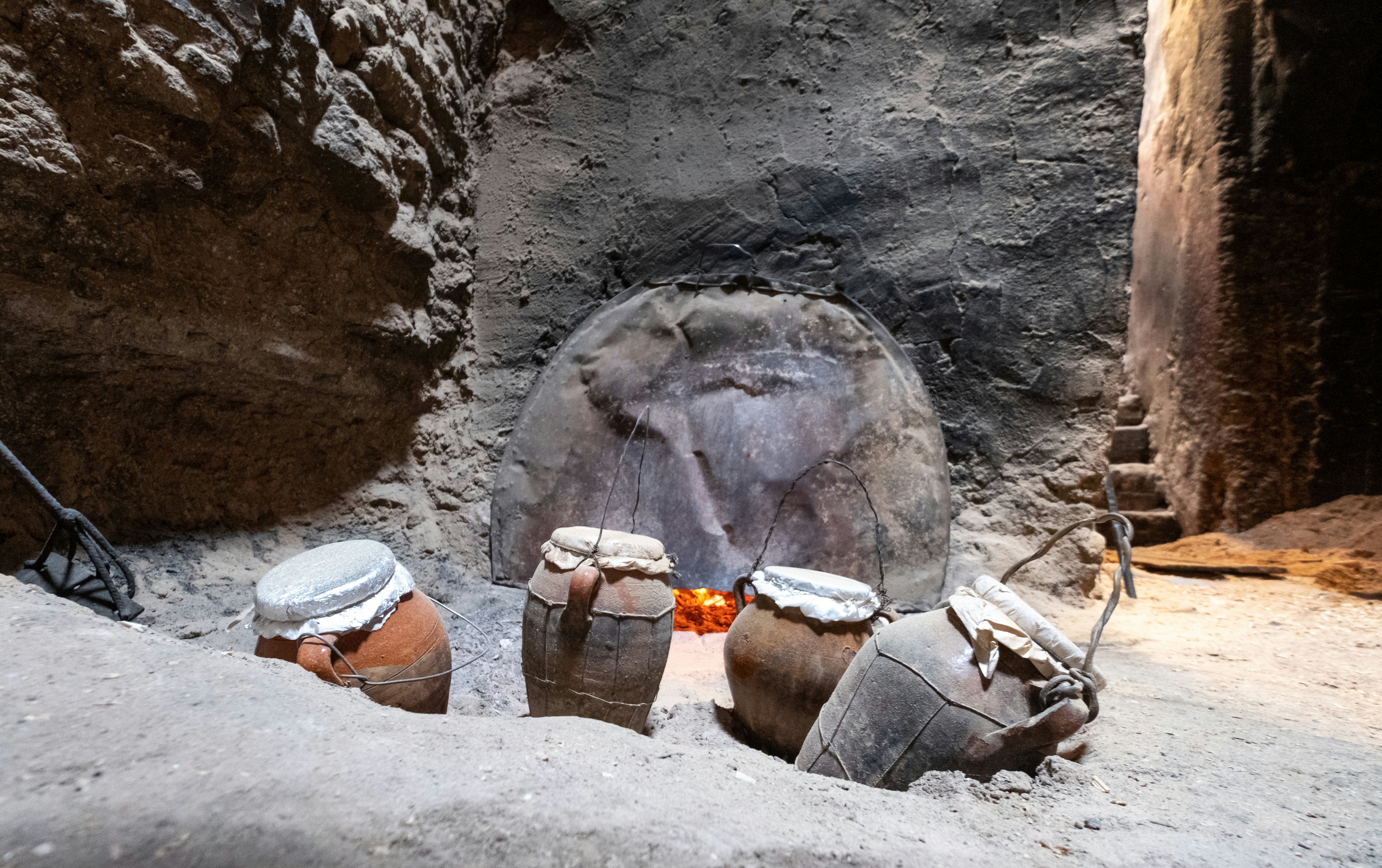
Scoff down some slow-cooked tanjia
This Marrakesh dish has been dubbed the bachelor’s dish, as it was originally cooked by single men who would put chunks of meat, onions, preserved lemon, garlic and cumin into a terracotta clay cooking pot and take it to the local communal oven or hammam to slow cook in the hot coals. Nowadays, it’s a dish that everyone should try in Morocco.
Where to try it: One of the most popular restaurants with tourists visiting Marrakesh, Chez Lamine has earned its reputation for excellence in traditional Moroccan cuisine.
Treat yourself to cornes de gazelle
Literally translating to gazelle horns, these small crescent-shaped cookies stuffed with almond paste and laced with orange-flower water are found across Morocco, and are best served with a piping-hot cup of “Berber whiskey” aka mint tea.
Where to try it: Indulge in sweet treats at the famous Pâtisserie Bennis Habous in Casablanca.

Chow down on bastilla
A Fassi specialty, though now found across the country, this savory-sweet pie is made up of wafer-thin warqa (filo-like pastry) traditionally stuffed with pigeon, chicken or vegetables as well as caramelized onions, lemon, eggs, and toasted sugared almonds – and then dusted with cinnamon and powdered sugar.
Where to try it: Also offering bread-making classes, the Ruined Garden in Fez is a cafe/restaurant where advance booking is essential.

Don't miss melt-in-the-mouth mechoui
This traditional Moroccan dish consists of a whole lamb, marinated with spices and slow-roasted for hours in an underground oven until it falls off the bone and melts in the mouth. Perfect for groups in restaurants, although it’s possible to get a smaller portion from street stalls.
Where to try it: For freshly carved mechoui, try Mechoui Alley in Marrakesh.
Slurp up some budget-friendly bissara
This thick fava bean or broad bean soup is especially popular for breakfast, topped with a generous drizzle of olive oil, a sprinkling of cumin, and a freshly baked khobz (flatbread). It’s also often a filling, affordable option costing little more than a few dirhams.
Where to try it: Bissara is one of only two menu items at Baissara Ansar, a small, budget-friendly spot in Chefchaouen.
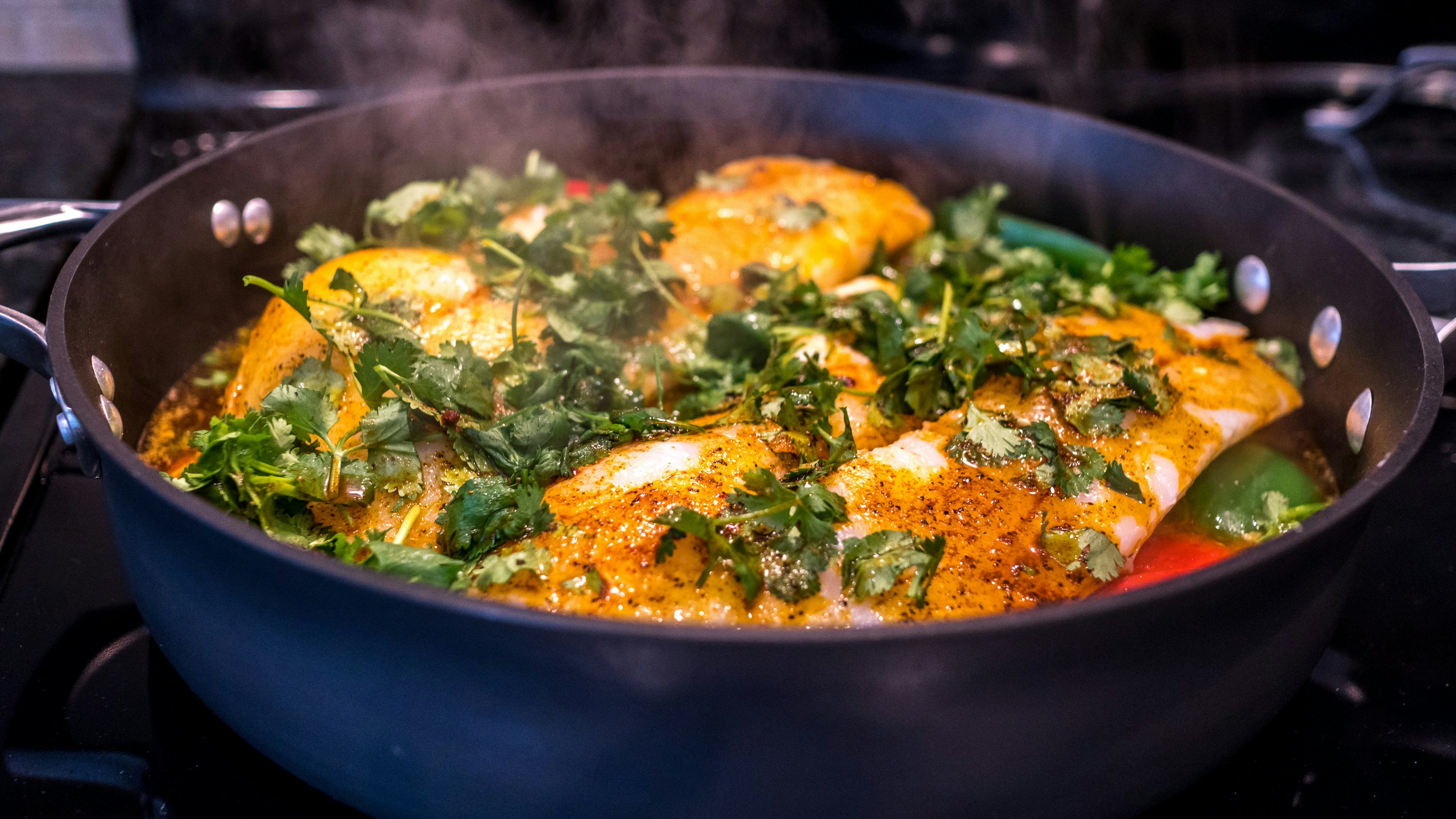
Dine on the herbaceous flavors of traditional fish chermoula
Chermoula is a tasty marinade made from a traditional blend of spices typically used on grilled fish and is often an integral part of religious celebrations and family gatherings. Loosely akin to a pesto sauce, chermoula’s unique combination of flavors stems from the fresh herbs, garlic, citrus and spices that come together in this dish.
Where to try it: Head to Fish house Al Aachabe in Marrakesh (and prepare to possibly wait in line). In Essaouira, inside the hotel Riad Mimouna, Restaurant Mimouna couples savory Moroccan classics with the dreamiest seaside scenery.
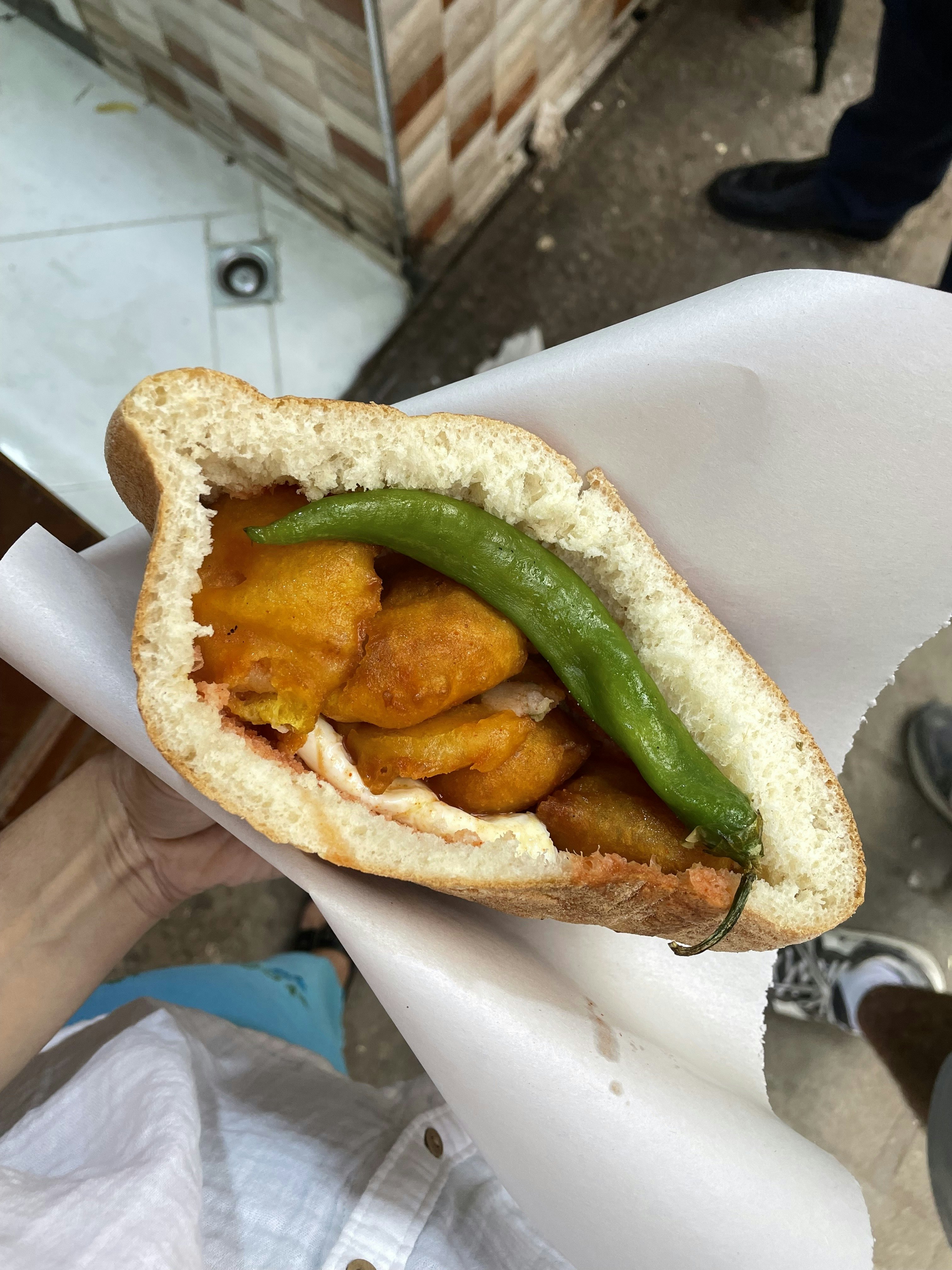
Try maâkouda, a signature Moroccan street snack
This popular street food is often compared to fritters, cakes or croquettes. The deep-fried potato balls are prepared by combining mashed potatoes, flour and herbs, before rolling the mixture into a ball or fritter and frying it.
Maâkouda is typically served as a starter or side dish, or as the filling in a sandwich alongside lettuce and tomato. It’s also a great affordable option if you're on a tight budget, but its price is no reflection of the abundant flavors that characterize the dish.
Where to try it: Although maâkouda is available at many street stalls, for an indoor dining experience, Cafe Clock is a popular spot, with multiple locations in Fez, Marrakesh and Chefchaouen.
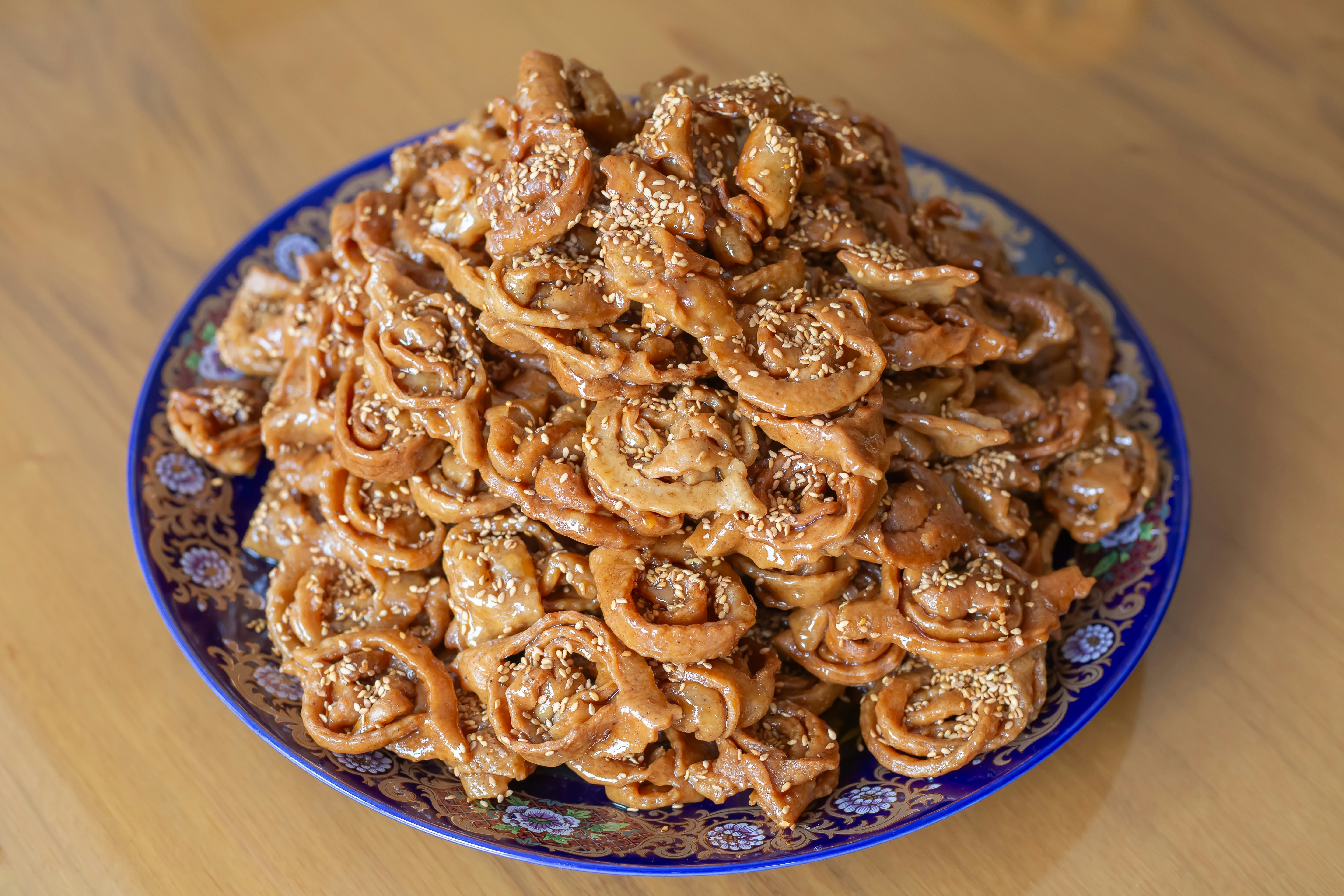
Complete your meal with the sweetness of chebakia
The flavors of anise, cinnamon and saffron come together in this sweet delicacy. While some might liken it to a sticky, sweet pretzel based on its appearance, the consistency is more similar to a cookie that’s been rolled in honey.
Chebakia is a particularly special treat during Ramadan and religious observances. However, it’s also a common street food snack. Try a local cooking class during your visit to make your own or meander into one of many pastry shops throughout the medina.
Where to try it: La Rose du Sable in Ait Ben Haddou is renowned for its chebakia. In Marrakesh, try ice cream flavored with chebakia at Oriental Legend or opt for a more traditional rendition at street food eatery Bazaar Cafe.
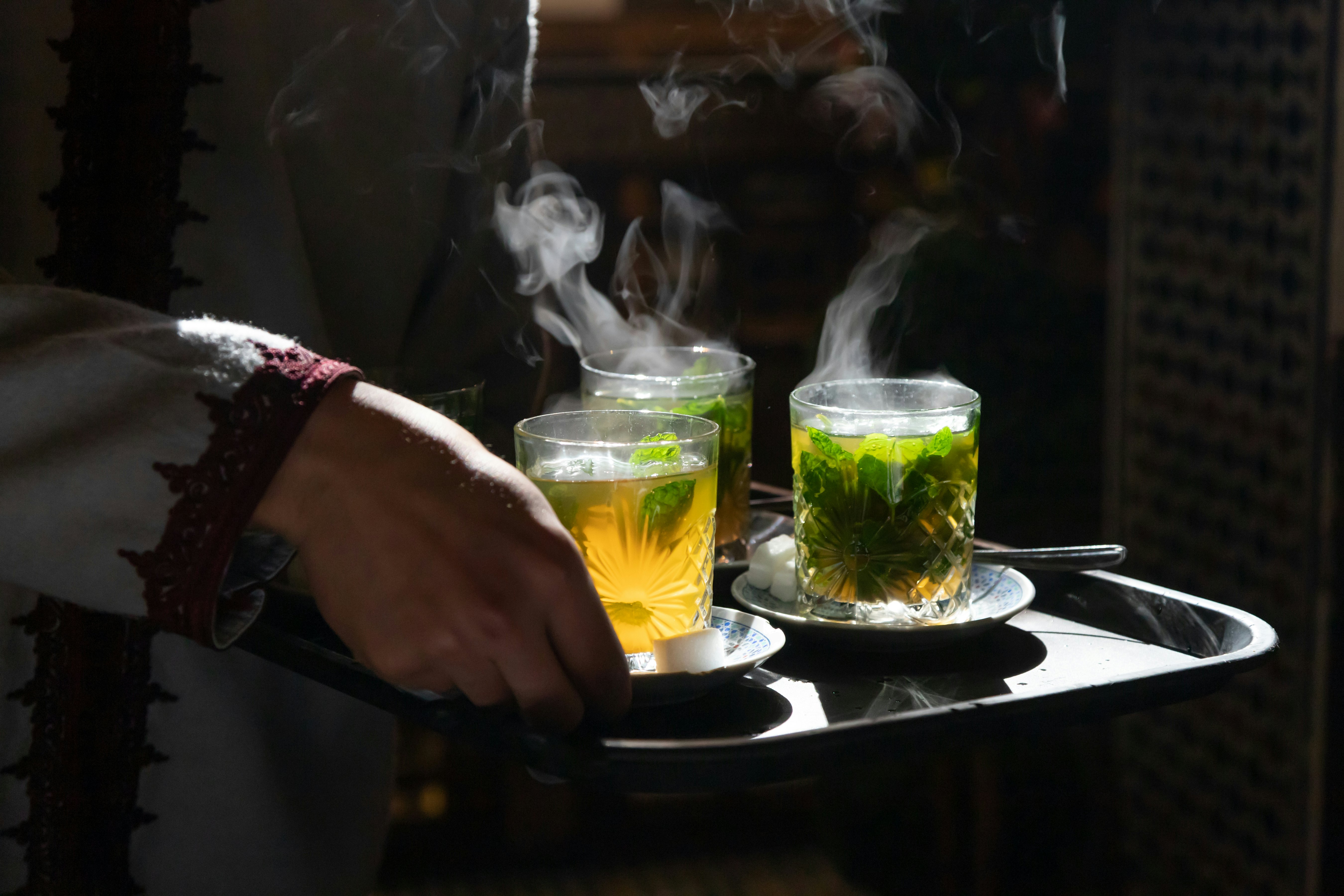
Enjoy a refreshing maghrebi mint tea
This refreshing drink, affectionately nicknamed Berber whiskey, is ubiquitous across Morocco. Combining steeped green tea with a handful of fresh nana mint leaves (spearmint) and sugar, you'll be offered some when you arrive at your riad or if you're invited as a guest into someone's home. Mint tea in Morocco is a symbol of tradition and friendship enjoyed in both everyday settings and during special occasions. Small tea shops are often found in the souqs, too.
Where to try it: While mint tea can be found in abundance, stopping by the iconic Pâtisserie Driss in Essaouira is a great way to see a piece of history, as it opened in 1928.
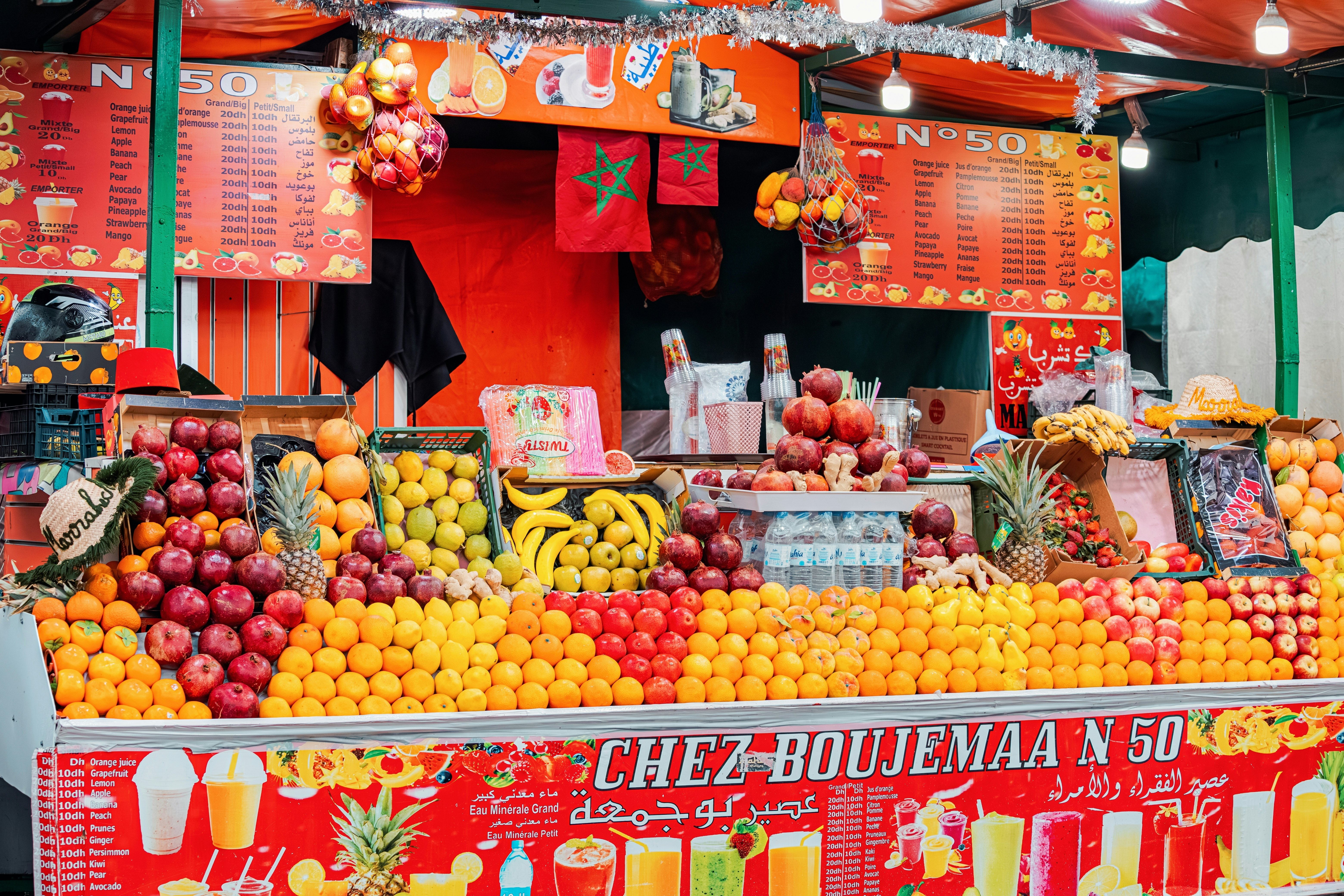
Vegetarians and vegans
Despite the camel spleen sausages, sheep’s-head soup, and other nose-to-tail eating options, Morocco offers plenty of vegetarian and vegan choices. Dried fruit, nuts and olives from the souq are solid snack options or grab some goat cheese with just-baked khobz.
If you're in self-catering accommodations, load up on pastries, pancakes, fresh fruit and freshly squeezed juice for breakfast. Bissara is a delicious bean soup that’s typically meat-free, but steer clear of bubbling roadside vats – they may contain snails or sheep’s-head soup.
At lunch, try the mezze of salads, which come with fresh bread and may range from delicate cucumbers in orange-blossom water to substantial herbed beets laced with kaffir lime. Vegetarians can sometimes, but not always, order a vegetable tajine or couscous with seven vegetables – call ahead if you can. Pizza is another widely available and inexpensive vegetarian option, best when topped with local herbs and olives.

Foods worth trying
Nothing goes to waste in Morocco and those with a strong stomach should try these popular dishes, available from markets and food stalls across the country.
Snail soup: Pluck the earthy-tasting snails from their shells and then drink the flavorsome broth or opt for the broth sans snails; this mix of more than 10 spices is reputedly good for your digestive system.
Camel spleen: Think more camel sausage. The spleen is stuffed with camel meat, spices and hump fat and then baked, sliced, grilled and served up in a gamey-tasting sandwich.
Sheep’s head: Watching a sheep’s head being charred over hot coals isn’t for the squeamish, but Moroccans have their favorite parts, perhaps a soft chunk of the cheek. The brain is probably bubbling away in a rich sauce nearby.

A year in food
Morocco is the archetypal Slow Food destination, and there’s never a bad time to visit. Its myriad fruits and vegetables are often bound for Europe, but head to any medina market to find local, seasonal produce piled high on market stalls and wooden carts.
Spring (March–May)
It’s time for avocados, apricots and oranges, as well as strawberries. Delicious in fresh juices.
Summer (June–August)
Fruits, such as watermelon, tomatoes, peaches, figs, grapes and prickly pear have ripened, and mid-June brings the Cherry Festival in Sefrou.
Fall (September–November)
Fall sees grapes and pomegranates (mentioned in the Quran as being one of the fruits of paradise), along with the date harvest – it’s said that Morocco has more than 100 varieties.
Winter (December–February)
The cooler months bring clementines, onions, beetroots, carrots and potatoes, as well as omnipresent oranges.
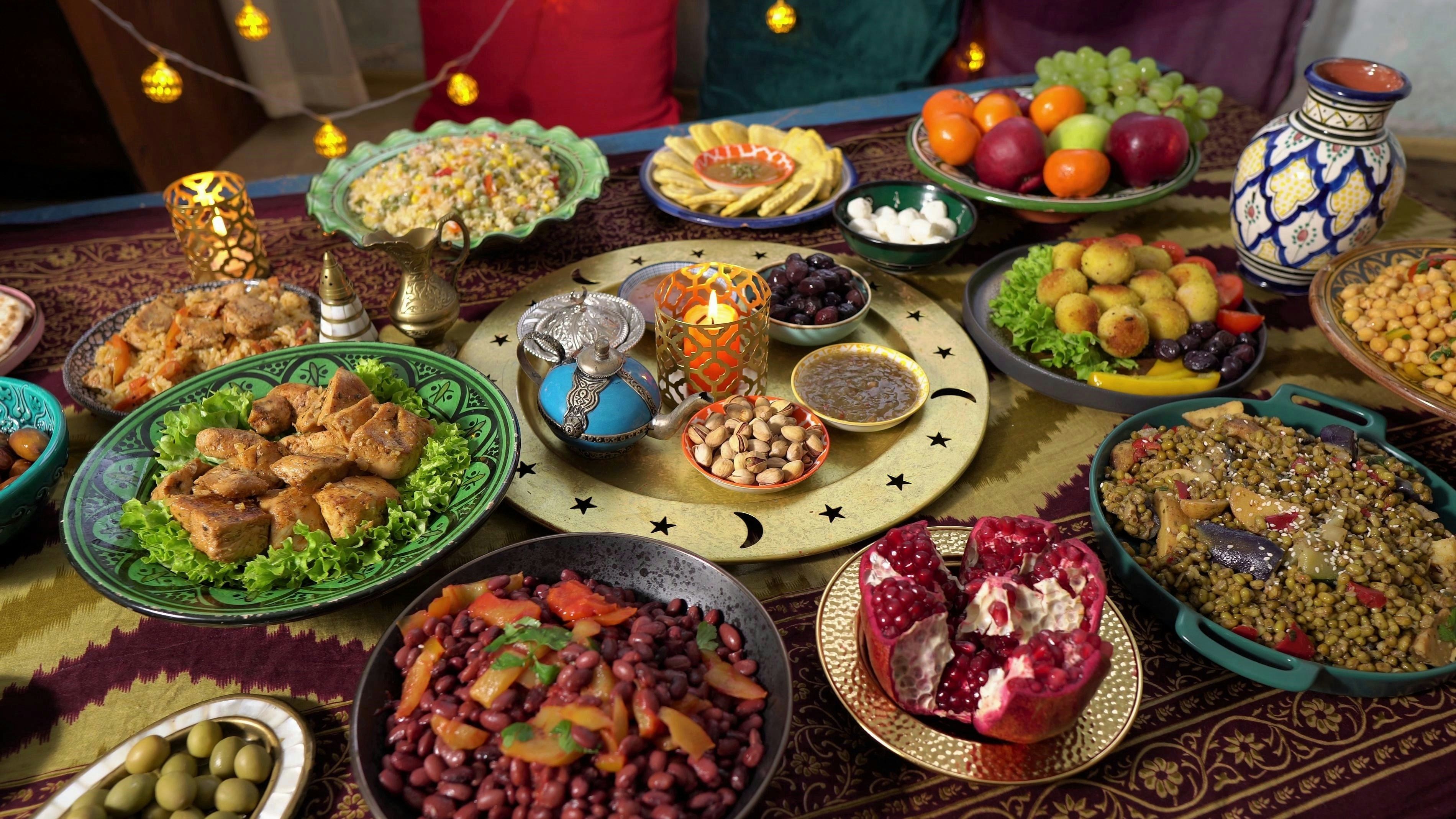
Eating during Ramadan
During Ramadan, most Moroccans observe the fast during the day, eating only before sunrise and after sunset. Dinner is eaten later than usual, and many wake up early for a filling breakfast before dawn.
Although you will not be expected to observe the fast, eating in public is still frowned upon. Hence many restaurants are closed during the day until iftar, the evening meal when the fast is broken – though if you call ahead to restaurants in tourist areas, you may have luck. Plan ahead: load up on snacks in the market to eat indoors, make arrangements for breakfast or lunch in the privacy of your guesthouse, and ask locals about a good place to enjoy iftar.

Moroccan dining etiquette tips
In many settings, meals are served at low, round tables with communal-style dishes designed for everyone to dig in. Moroccans typically eat with their right hand – skipping the silverware – as the left hand is traditionally reserved for cleaning purposes. Reaching across the table is also a no-go – only accept food that is passed to you. And for those with the gift of gab, you’ll be glad to know that eating in silence is rude, so chat away. This family-style experience makes dining in Morocco a treat that feels like communal and fun.
After dinner, consider taking a stroll, a popular activity often enjoyed by locals and visitors keen on embracing this leisurely aspect of Moroccan culture. Typically spanning several hours – between afternoon tea time to post-meal wind down – the culinary experiences of Morocco are best enjoyed by settling into the country’s pace and hospitality.








